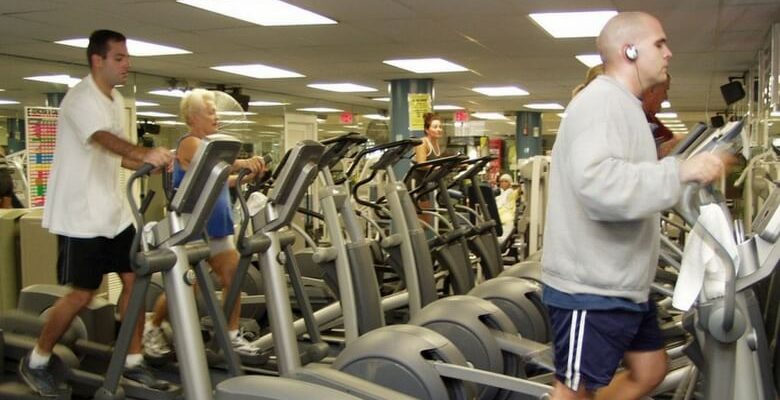Stationary bikes have an undeserved reputation – many consider them to be arduous and tedious. But working out on a stationary bike can do wonders to your health and your body. It improves your cardio-respiratory capacity and boosting the hearts ability to pump blood. Also, stationary bikes builds up lower body muscles, strengthens the core and boosts the body’s ability to burn up calories in a timely fashion. Here is why you should include exercise bikes into your workout regime.
Viable Cardio Workout
Working out on a stationary bike is one of the best cardio exercises that you can adopt. It can do wonders to your health and body. And you do not have to necessarily follow a strict work out regime to reap all the benefits. According to ExerciseBikesExpert, these can be achieved by exercising for just 30 minutes daily, five time per week.
As for the positive health benefits that cardio exercising brings, you can expect improvements in the following departments:
- Boosts the heart’s ability to pump blood.
- Raises good cholesterol levels, while lowering bad cholesterol.
- Prevents arteries cloggage.
- Regulates blood sugar levels.
- Maintains blood pressure at healthy levels.
- Improved cardio-respiratory capacity. This improvement will boost your physical performance and allow you to exercise longer as you will learn to manage the intensity and frequency of your breathing better.
- Cuts down the risk of developing cardiovascular diseases
Low-Risk Exercise
The rookie gym goers will surely appreciate is the fact that it is a very low-risk exercise. Other intense cardio exercises such as skipping and running can be very taxing to the body, exposing it to knee injuries and pains in the joints.
On the contrary, stationary bike exercises are actually recommended by specialists to people with serious knee injuries. In times of injury, the ligaments and tendons become weak, affecting body balance, flexibility, and stability. Rehabilitative exercises are prescribed to solve these exact issues by slowly redeveloping the dormant muscles and the supportive joint structures that were affected by injuries. In other words, stationary bikes are safe and can be used to treat the body damages that other cardio exercises can provoke.
Lower Body StrengthTraining
Exercising on a stationary bike is a great way of growing your lower body muscles. The fat will burn at a steady state, and by increasing and decreasing resistance and constantly switching between cycling motions develops the muscles in the process.
This is an isotonic exercise, and it works by strategically contracting and expanding the muscles in given intervals. Through repetition and consistency, you will grow and build the lower body muscles (glutes, hamstrings, calves, quadriceps), also a strong core (back and abdominal muscles).
Boosts Weight Loss
If your objective is solely losing weight, exercising on a stationary bike is the best way to achieve it. By building a regular cycling routine consisting of at least 30 minutes of exercising daily, five to six times per week, you can burn many more calories than by running. You can do this 30-minute interval in one session or split up in 10-minute bursts of intense cycling.
There are many equally viable workout routines that you can adopt, but the best of the bunch has to be interval training. A study published in 2011 shows that interval training is much more efficient at burning fat, especially those that are deposited on the belly, than moderate workouts.
Here is the workout plan for interval training:
- Phase 1. Do a couple of low-intensity warm-up exercises for 10 to 15 minutes, or until you feel like your blood flow is increasing, and your joints are more flexible. It is vital you not skip this step – neglecting the warm-up phase can expose you to potential joint injuries and unpleasant muscle cramps that will put you off exercising.
- Phase 2. Set the resistance to medium-high settings and slowly pedal for two to three minutes. Try to keep at it until your heart beat rises and you run out of breath.
- Phase 3 (transition phase). Decrease the resistance settings and pedal for two minutes. Wait until the heart and breath rates return to normal levels.
- Phase 4. Rotate between high-intensity and low-intensity cycling motions for 15 to 20 times, two to three minute each, depending on your physical capacities.
- Phase 5. Finish your workout with five minutes of slow pedaling. Step of the bike and do five to ten minutes of low-intensity stretching exercises.
This is the most basic workout programme that both rookies and experienced gym goers can follow with great results. It is worth noting that you can customise the time frames presented above to accommodate your personal physical limits.
For example, concerning the fourth phase instead of switching between cycling motions for 20 times, you can cut it down to ten if you are not up to the challenge. If you can’t handle three-minute bursts of high-intensity cycling, you can cut it down to one, one and a half minutes. The greatest thing about stationary bikes is that the workouts can be personalized, so do not hesitate to experiment and test your limits.
Conclusion
In the last few decades, stationary bikes have become almost ubiquitous. There is no denying the fact that stationary bikes have a lot of benefits for the health and physical well-being of the body. From boosting your cardio-respiratory capacity to preventing conditions associated with sedentary lifestyle like heart diseases and obesity.
Furthermore, working out on a stationary bike will build the lower body muscles and strengthen the core. As a result, there is no reason why you should not include them in your daily workout routine.
Guest Article By Luke Mitchell




